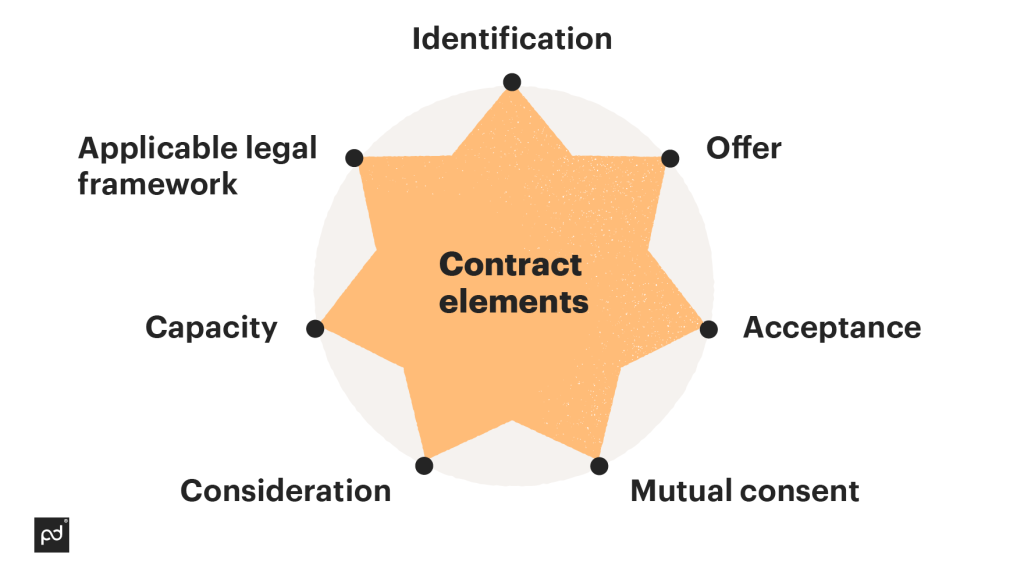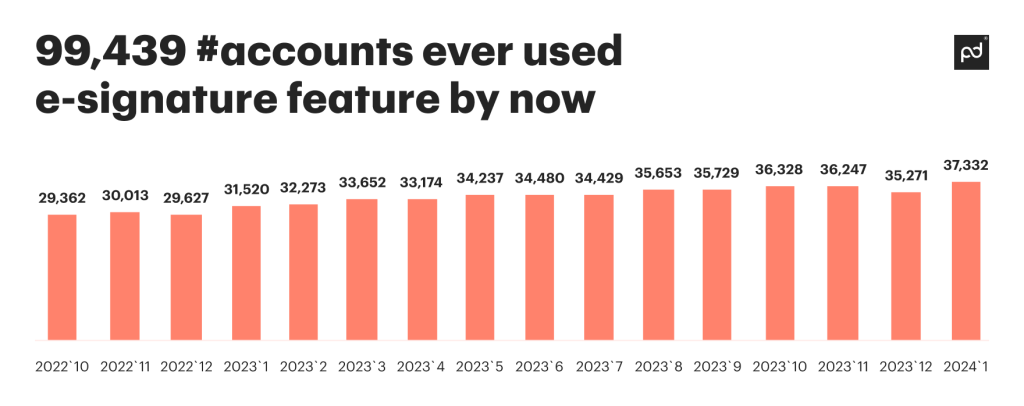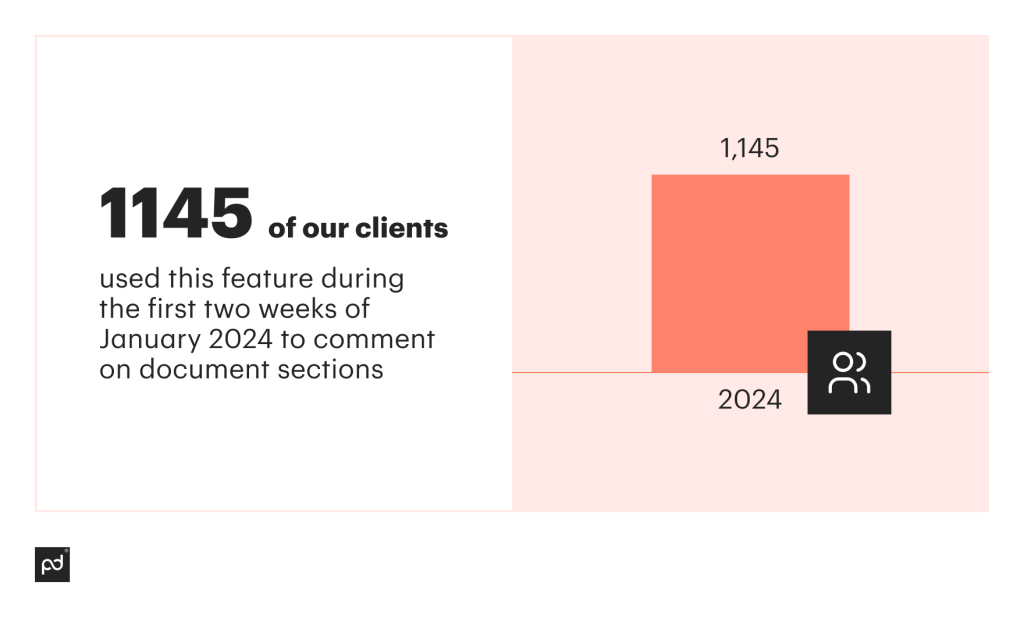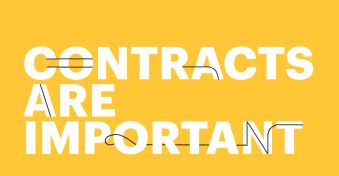Are you kicking off a real estate business, starting your freelance career, working in sales, or any other field where contracts are key?
In this guide, we’ll break down the different types of contracts you might use and explain the aspects of contract law you need to know.
You’ll also learn how to easily draft your first and all subsequent contracts with the help of customizable business templates.
Let’s master contract creation!
What is a contract?
A contract is a legally binding agreement between two or more parties. In it, you have all the details of the agreement clearly defined.
Think of it as a legally enforceable promise, with parties saying to each other, “I will do this, and if I don’t, you can take these legal steps to seek a remedy.”
A contract also explains the responsibilities of each party and the legal consequences that may occur if you or any other party breaks the contract terms.
What makes a contract legally binding?
In order for a contract to be legally binding, it must meet certain requirements.
Specifics may vary by jurisdiction but generally include seven essential elements.
These are:

- Identification. Clearly define all the parties involved.
- Offer. What one party promises to the other party in exchange for something in return.
- Acceptance. Approval of the contract, a “yes” from all sides.
- Mutual consent. Everyone involved shows their consent by signing the contract.
- Consideration. The consideration is about what each party gains.
- Capacity. Everyone signing needs to be legally and mentally competent to do so.
- Applicable legal framework. Last but not least, the contract must align with local laws, for example, state laws, to be legit.
These seven parts of the contract allow you to turn a simple promise into a legally binding contract.
What are the 5 essential elements of a contract?
For a contract to be valid and enforceable, it must include these five essential elements:
- Offer: One party proposes an agreement, outlining specific terms.
- Acceptance: The other party agrees to the terms, creating mutual consent.
- Consideration: Something of value (money, services, goods) is exchanged between the parties.
- Legal capacity: All parties must be of legal age and sound mind to enter into the agreement.
- Legal purpose: The contract’s terms must comply with applicable laws and not involve any illegal activities.
These key components ensure clarity, fairness, and legal enforceability, protecting all parties involved in the agreement.
What are the most common types of contracts?
Contracts are everywhere, from our mortgages to our phone plans.
Creating an exhaustive list of types of contracts would take many pages. Instead, here are the most common contract types you’ll see in day-to-day business:

1. Simple, standard business contracts
This type of contract is a simple outline of an agreement between two parties.
For example, a non-disclosure agreement (NDA) or an employment contract between an employee and a business owner.
It’s legally binding and enforceable, even though it doesn’t require an official seal.
These kinds of contracts can be verbal agreements, although written contracts are always advised.
Verbal contracts can be difficult to enforce when disputes arise.
2. Express contracts
An express contract occurs when two or more parties interact and agree on terms.
For example, if you’re at an auction and you bid on an item, you form an express contract to buy that item.
There doesn’t need to be a written agreement for this to happen.
3. Lump-sum contracts
Also known as a fixed-cost contract, parties agree to a lump-sum payment in advance.
For example, an agreement to pay an independent contractor’s estimate.
There’s usually a consideration for unexpected costs built into the payment.
That’s because the payment details stay the same even if costs increase during work.
Cost estimation can be a lengthy process with these contracts. It’s important for estimates to be accurate to avoid one party losing out on the deal.
4. Unit price contracts
In these legally binding contracts, the price of a “unit” is mutually agreed upon by a buyer and a provider.
A unit can represent time, materials, or labor. For example, one unit might be the cost to complete one square foot of flooring.
Therefore, the total cost of the contract is only determined once the work is completed.
Total costs can be estimated based on the scale of the project.
That means it’s easy for both parties to understand and adjust in case of a change of scope.
5. Time and materials contracts
This one is quite self-explanatory; payment is based on the time and materials needed to complete a project.
This is a highly flexible form of legal agreement, but it can lead to escalating costs if project parameters change.
6. Cost-reimbursable contracts
A contractor is reimbursed for the costs incurred over the terms of the contract.
This is normally estimated by the contractor before work is completed. Parties can also agree on a cost ceiling to avoid costs going beyond a certain point.
This is quite common for lawyers or legal advice.
These kinds of service contracts allow for ongoing work with a contingency. Parties can meet and discuss the next steps if the cost ceiling is reached.
How do I create a contract in simple steps?
You can create a contract agreement from scratch or with the help of contract management software and use a document tracking solution to track all the actions that parties involved take.
Either way, follow these simple steps.
They’ll help you determine what type of contract you need and write a basic framework.
- Discuss the details of the agreement with all parties.
- Choose your contract type based on this discussion.
- Create an introductory paragraph with the legal names and contact information for all parties and a start/end date for the contract.
- Define the key terms that appear in the document for clarity (e.g., unit price).
- Define the scope of work, deliverables, and responsibilities of each party.
- Define the payment terms and schedule.
- Set penalties and clauses for failure to adhere to the contract terms.
- Review the contract details between all parties and make any amendments.
- Have all parties sign or eSign the agreed contract
Also, when it comes to signing a contract, remember that most of them are signed electronically these days to reduce delays and paper consumption, and the convenience of having them instantly retrievable from secure cloud storage.
Nearly 100,000 client accounts have utilized our platform to electronically sign documents at least once.
Including over 37,000 accounts in January 2024 alone, where eSignature was vastly used for any type of document.

What are the best practices for creating an effective contract and agreement?
There are a few best practices you can follow that will help you make an effective contract.
- Keep it simple.
It’s important that all parties can understand the terms of the agreement, so avoid unnecessarily complex “legalese.”
Agree on a way to terminate the contract and a way to resolve breach of contract disputes ahead of time.
This can save a lot of time and resources if problems arise later. Agreements to mediate disputes can avoid costly legal action.
- Maintain a transparent dialog between parties.
An excellent way to ensure this happening is through the use of inline comments.
In just the US alone, 1145 of our clients used this feature during the first two weeks of January 2024 to comment on document sections, tag team members, and manage feedback when constructing and revising their contracts. And this number is continuously growing.

- Set out all requirements and responsibilities in plain English.
That includes payment schedules and penalty clauses. Keep the terms well-organized and easy to track.
- Finally, store and manage all your documents easily and securely.
Can I make my own contract?
Whether you’re creating a sales contract or service agreement, you can create one yourself and customize details, such as deliverables, the scope of work, and any warranties.
In fact, over 85,000 of our clients have counted on official contract templates to save time and minimize errors when crafting legal agreements — including 28,000 accounts during the first month of 2024.

As long as an agreement is legally binding, and all parties agree, you have a contract.
Frequently asked questions
-
Contracts clearly outline the responsibilities of all parties and provide legal protection if disputes arise.
-
Absolutely! With customizable templates and tools provided by platforms like PandaDoc, creating contracts is fast and easy. For complex agreements, consider consulting a lawyer.
-
A legally binding contract requires:
- Clearly identified parties
- Offer, acceptance, and mutual consent
- Consideration (something of value exchanged)
- Legal capacity of all parties
- Compliance with applicable laws
-
While verbal contracts can be enforceable, written agreements are highly recommended for clarity and easier dispute resolution.
-
Many contracts don’t require notarization to be legally binding, but notarization can add an extra layer of security by verifying the identities of the signers and confirming that they signed voluntarily.
This is especially common for specific agreements like real estate transactions or loan documents.
To notarize a document, you’ll need to visit a notary public in person or use an online notarization platform for convenience. Learn more about how to notarize a document online.
-
Keep it clear and concise, define key terms, include payment details and penalties, and ensure all parties review and sign.
-
Yes, eSignatures are recognized as legally valid in most jurisdictions and streamline the signing process.
-
Communicate openly, clearly outline terms, and use tools like inline comments to collaborate during drafting and revisions.
Scale up and make solid contracts with PandaDoc
As you scale up your business, you might face the need to create hundreds of contracts every month.
Want more efficiency? Integrate tools with the solutions you use daily, such as CRMs, payment systems, or document storage solutions, and easily import data into your contracts.
You can create contracts in minutes with contract management software features.
Next, you can easily share and collaborate on contracts, automatically track renewals, and more. Schedule a 15-minute demo with us today.
Disclaimer
PandaDoc is not a law firm, or a substitute for an attorney or law firm. This page is not intended to and does not provide legal advice. Should you have legal questions on the validity of e-signatures or digital signatures and the enforceability thereof, please consult with an attorney or law firm. Use of PandaDocs services are governed by our Terms of Use and Privacy Policy.
Originally published December 8, 2022, updated January 30, 2025


